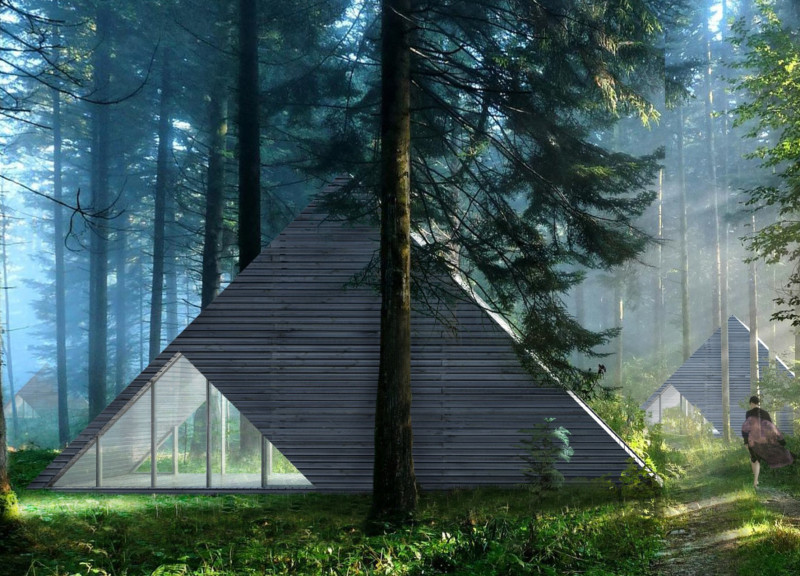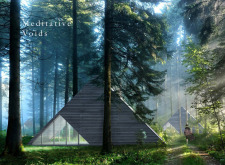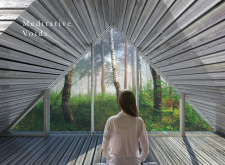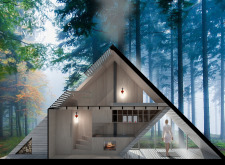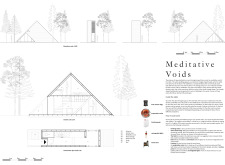5 key facts about this project
The architectural concept centers around creating "voids," or spaces that encourage meditation and reflection. These voids are integral to the experience of the inhabitants, designed to foster a strong connection with the surrounding environment. The building's triangular forms echo an elemental simplicity and stability, symbolizing strength and a grounded relationship with the earth. This geometry complements the delicate yet robust nature of the site, where wooden structures meet the lush greenery, creating a seamless integration of architecture and landscape.
Functionally, the project accommodates a variety of spaces that cater to relaxation and contemplation. The design is organized to emphasize open-plan living, where the main areas promote a sense of community while still allowing for personal retreat. The inclusion of large glass panels enhances this interconnectivity, blurring the lines between indoor and outdoor spaces, and allowing natural light to flood the interiors. This design choice not only enriches the visual aesthetics of the project but also emphasizes the therapeutic qualities of daylight and outdoor views.
The project utilizes sustainable and locally sourced materials to align with its ecological ethos. The predominant use of wood imbues the interiors with warmth, creating an inviting atmosphere that evokes a sense of calm and familiarity. Timber cladding wraps the exterior, and its natural hue complements the surroundings, ensuring that the structure feels embedded within its context. In conjunction with this, the careful placement of concrete serves foundational purposes while maintaining a minimal surface area, thus preserving the overall lightweight appearance of the design.
Innovative architectural strategies are evident in the details throughout the project. Thoughtful elements such as evaporative coolers and solar shower bags highlight the commitment to sustainability, demonstrating a forward-thinking approach to energy efficiency. The inclusion of skylights invites occupants to engage with the cosmos, turning the experience of sleep into a serene commune with nature. Each detail is crafted not just for utility but also for enhancing the meditative aspects of the space.
The landscaping around the structure plays a vital role in the overall architectural vision. Natural pathways meander through the site, encouraging exploration and interaction with the surrounding flora. The design promotes outdoor experiences while maintaining a level of privacy among the structures. Each aspect of the landscape design works in coordination with the architecture to reinforce the themes of serenity and mindfulness.
The unique design approaches adopted in the "Meditative Voids" project reflect a careful balance of modern principles and traditional influences. The use of triangular forms, eco-friendly materials, and a commitment to sustainability create a cohesive narrative that speaks to contemporary architectural challenges and opportunities. This project not only serves as a retreat but as a reflection of a lifestyle that values mindfulness and an intimate relationship with nature.
For those interested in gaining deeper insights into the architectural plans, sections, and design intricacies, further exploration of the project presentation will reveal the full scope of architectural ideas and innovations that define "Meditative Voids." The thoughtful collaboration of form and function embodies a contemporary vision that addresses the human need for contemplation amidst the beauty of the natural world.


